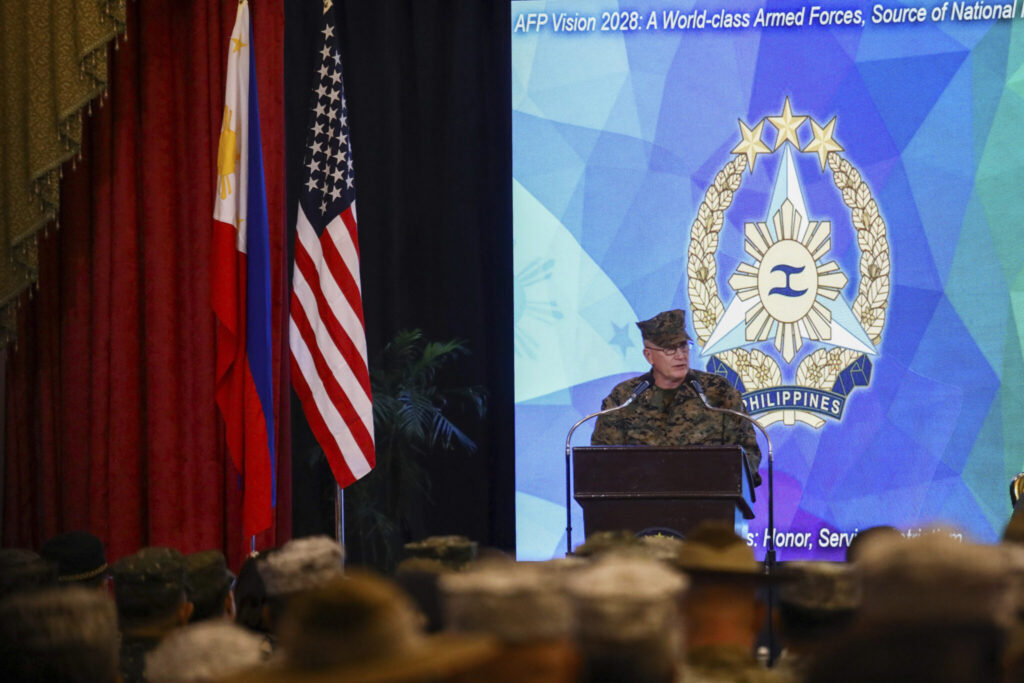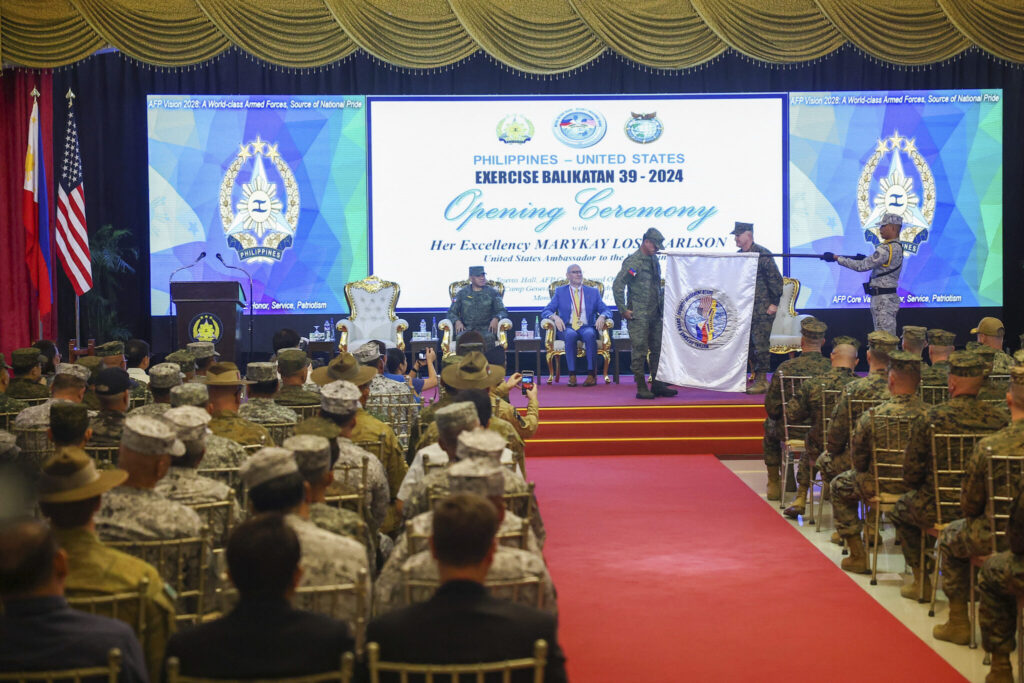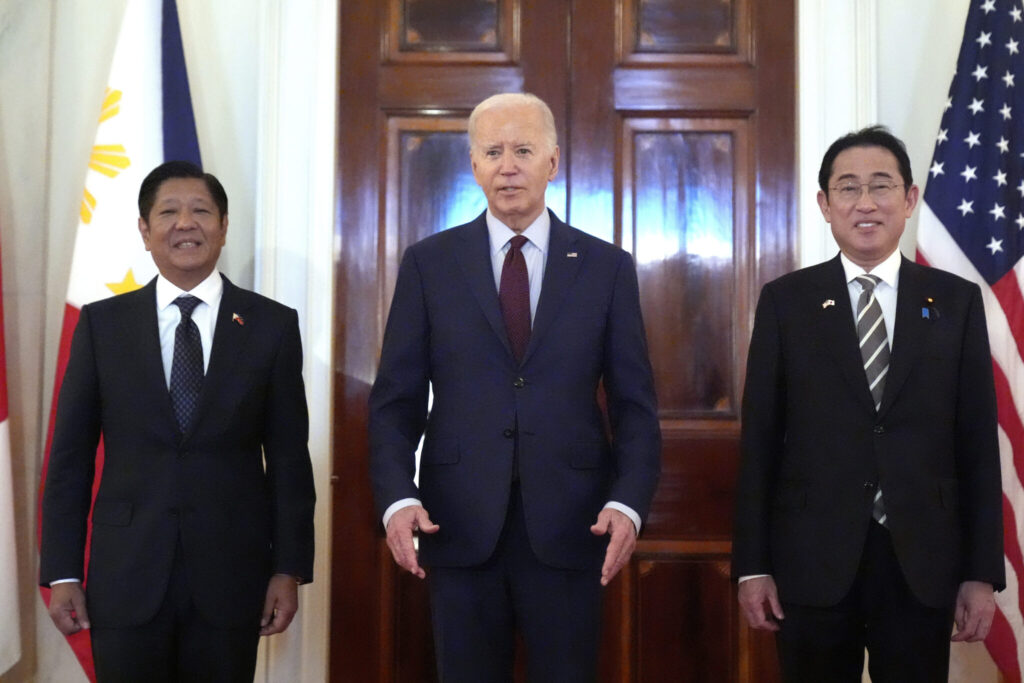American and Filipino forces launched their largest combat exercises in years Monday in a show of allied firepower near the disputed South China Sea that has alarmed Beijing. The annual exercises by the longtime treaty allies will run until May 10 and involve more than 16,000 of their military personnel, along with more than 250 French and Australian forces.
Quick Read
- Largest Combat Exercises: American and Filipino forces initiated their largest joint combat exercises in years near the South China Sea, showcasing significant military cooperation amid regional tensions.
- Extensive Participation: The exercises, running until May 10, involve over 16,000 U.S. and Philippine military personnel, with additional participation from more than 250 French and Australian forces.
- Focus on Territorial Defense: The Balikatan (Tagalog for “shoulder-to-shoulder”) exercises emphasize territorial defense, reflecting ongoing disputes in the South China Sea where confrontations with Chinese forces have occurred.
- U.S. Commitment Reaffirmed: U.S. officials, including Marine Lt. Gen. William Jurney, underscored the exercises as proof of the U.S.’s commitment to its Mutual Defense Treaty with the Philippines, stressing the alliance’s readiness to defend shared interests.
- China’s Reaction: The exercises drew sharp criticism from China, with accusations of the Philippines aligning with non-Asian nations to provoke regional instability, and specific objections to the deployment of U.S. missile systems near Chinese territory.
- Strategic Implications: The drills include advanced military activities like joint naval maneuvers and simulated combat scenarios, highlighting the strategic partnership against perceived threats in the Pacific region.
The Associated Press has the story:
US and Philippine forces launch combat drills in the disputed S. China Sea
Newslooks- MANILA, Philippines (AP) —
American and Filipino forces launched their largest combat exercises in years Monday in a show of allied firepower near the disputed South China Sea that has alarmed Beijing.
The annual exercises by the longtime treaty allies will run until May 10 and involve more than 16,000 of their military personnel, along with more than 250 French and Australian forces.
While the Philippine military maintains that the Balikatan — Tagalog for “shoulder-to-shoulder” — trainings are not directed at a particular country, some of their main conflict scenarios are set in or near the disputed South China Sea, where Chinese and Philippine coast guard and accompanying ships have figured in a series of increasingly tense territorial faceoffs since last year.
In encounters in disputed areas, Chinese coast guard vessels have resorting to water cannons, blocking and other dangerous maneuvers that have caused injuries to Philippine navy personnel and damaged supply boats.

The Philippine military said a key focus of this year’s drills is territorial defense. “We’re dead serious about protecting our territory — that’s why we do these Balikatan exercises,” Col. Michael Logico, who speaks for the Philippine military on the combat drills, told The Associated Press.
As the disputes between China and the Philippines have escalated, President Joe Biden and his administration has repeatedly warned that the United States is obligated to defend the Philippines, its oldest treaty ally in Asia, if it is attacked.
U.S. Marine Lt. Gen. William Jurney said in the ceremony that the large-scale military exercises will demonstrate that the 1951 Mutual Defense Treaty between the U.S. and the Philippines “is no mere piece of paper.”
Washington lays no claim to the contested waters but has declared that freedom of navigation and overflight and the peaceful resolution of the disputes are in its national interest.

Philippine military chief of staff Gen. Romeo Brawner, who opened the exercises in a ceremony, said that as Pacific coastal nations, the United States and the Philippines “understand the importance of maritime cooperation in addressing the complex challenges that threaten peace and security in our region.”
China strongly criticized the exercises, saying the Philippines was “ganging up” with countries from outside Asia in an obvious reference to the United States and its security partners, and warned that the drills could instigate confrontation and undermine regional stability.
The combat drills will include a joint sail by the U.S., Philippine and French navies in and near disputed waters off the western Philippine province of Palawan, the sinking of a mock enemy ship by combined U.S. and Philippine firepower, and the retaking of an occupied island off the northwestern Philippines, according to the Philippine military.

China specifically opposed the transport of a U.S. ground-launched missile system to the northern Philippines ahead of the exercises. No missile would be fired but the aim was to build familiarity among military participants with the hi-tech weaponry in a tropical setting.
Chinese Foreign Ministry spokesperson Lin Jian expressed China’s grave concern over the deployment of the missile system “at China’s doorstep.”
“The U.S. move exacerbates tensions in the region and increases the risk of misjudgement and miscalculation,” he said in response to a question in a news briefing in Beijing last week. “The Philippines needs to think twice about being a cat’s paw for the U.S. at the expense of its security interests and stop sliding down the wrong path.”

The Biden administration has been strengthening an arc of alliances to better counter China, including in a possible confrontation over Taiwan, an island democracy that Beijing claims as its own.
That dovetails with efforts by the Philippines under President Ferdinand Marcos Jr. to defend its territorial interests by boosting joint military exercises with the U.S. He has also allowed rotating batches of American forces to stay in additional Philippine military camps under a 2014 defense pact, including in his country’s north, which lies just a sea border away from Taiwan and southern China.






